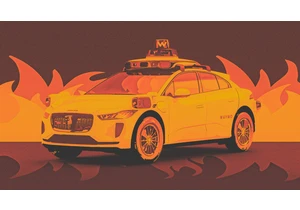Technological progress is built atop breakthroughs from the companies that build chips (and the factories that produce the chips), communications infrastructure, and all-new platforms such as quantum computing. These companies are doing everything from souping up today’s AI to bringing fast connectivity to places it’s never been before.
Cerebras Systems
For putting the super in supercomputer
Nvidia GPUs may be the brains behind much of today’s cloud-based AI boom, but Cerebras is building an alternative platform around its technology, which packs 57 times more transistors into its CS-3 AI accelerator compared to GPUs. Working with UAE-based G42, the company has built the Condor Galaxy constellation of networked supercomputers, aiming to power AI for pharmaceutical, environmental, automotive, and other industries, all with better-than-GPU performance at greater power efficiency.
EdgeQ
For squeezing cell towers into a coin-sized package
Historically, companies have only been able to spread wireless communications as fast as they can build cell towers. EdgeQ’s “base station on a chip” puts the technology into an affordable package the size of a coin, allowing carriers to bring 5G to areas that have long been underserved as well as deploy it in smart factories, autonomous partners, and other venues. Its partners in this effort include wireless giant Vodaphone.
Nanotronics Imaging
For building a better chip factory
Nanotronics’ Cubefabs are AI-controlled factories that can slash the cost of building a semiconductor fabrication plant from $20 to $40 billion to $25 to $100 million. Using AI control and modular design, they offer faster deployment and reconfiguration than conventional fabs. And instead of relying on silicon for chip production, the factories use gallium oxide, a material that offers better energy efficiency. The company says its factories are 90% more energy and resource efficient than existing ones.
Qualcomm
For giving new—and longer—life to laptops
For decades, almost every Windows PC has been based on the x86 processor standard invented by Intel and adopted by AMD and others. In 2024, x86 finally got serious competition from Qualcomm’s Snapdragon X Elite. Built on many of the same technologies as Qualcomm’s smartphone chips, it packs a neural processor for on-board AI and delivers exceptional performance with unprecedented battery life. Major laptop makers have embraced it in machines such as HP’s OmniBook X, which claims up to 26 hours of battery life.
Quantinuum
For making quantum computing more reliable
Quantinuum’s H2-1 quantum computer includes 56 fully-connected, high-fidelity quibits, the emerging technology’s building blocks of computational power. In June, the company collaborated with JPMorgan to achieve a 100 times improvement performance in an industry benchmark for quantum performance. In September, it announced that it had worked with Microsoft to configure the H2-1 with 12 stable logical quibits, greatly reducing their error rate compared to physical quibits.
Taara
For speeding data on a beam of light
Using wireless optical communication technology, Taara—a “moonshot” project from Google parent company Alphabet—can move data at up to 20 gigabits per second over a distance of more than 12 miles. That allows deployment of high-speed internet in areas poorly suited to 5G, from densely-packed cities to rural areas. Working with Liquid Intelligent Technologies, the company brought connectivity to Kinshasa in the Democratic Republic of Congo by hopping over the Congo River—a body of water whose location has made transmitting internet over a fiber connection particularly expensive.
Truepic
For proving that photos really are photos
With AI doing an ever-better job at rendering imagery that looks like it came from a camera, it’s critical to establish a photo as genuine from the time of its creation. Working with Qualcomm, Truepic enabled phones based on Qualcomm’s Snapdragon 8 Gen 3 chip to mark images using Coalition for Content Provenance and Authenticity’s Content Credentials standard. That includes both real photos taken with the camera and synthetic ones generated using AI, ensuring a verifiable way to prove what’s what.
The companies behind these technologies are among the honorees in Fast Company’s Next Big Things in Tech awards for 2024. See a full list of all the winners across all categories and read more about the methodology behind the selection process.
Jelentkezéshez jelentkezzen be
EGYÉB POSTS Ebben a csoportban

Shares of Deliveroo, the food delivery service based in London, are hitting three-year highs on Monday after it received a $3.6 billion

Social media users have been having a field day with Waymo’s autonomou

If you’re not on TikTok, you may not have heard of Aaron Parnas. But for many young people across the U.S., he’s a prominent political news source, with over 3.5 million followers on TikTok and ju

Getting a sense of the scale of social media platforms can be tricky. While tech companies often share self-serving metrics—like monthly active users or how likely users are to buy products after


Fun fact: The saying “work smarter, not harder” is coming up on its 100th birthday. Coined

If you’ve followed Apple for any length of time, you’ve no doubt come across the notion that the company doesn’t rush into adopting cutting-
